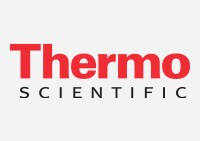Search Thermo Fisher Scientific

Non-Binding Assay Microplates
Non-binding assay microplates are fitted with wells that protect and minimize surface adsorption of sample molecules. Microplates have a wide array of homogenous usages incorporating vessels or plate readers for reactions where products need to be transferred in the future. Plates typically come in the 96-well variety and may be constructed from an assortment of materials. Thermo Scientific™ Nunc™ 96 DeepWell™ Polystyrene Plates feature round bottom, deep wells that have a 900μL capacity per well, to enable agglutination assays large samples.
Products (3)
Learn More (360)
Documents & Support
(645)3 Products
Filter
96-Well Plates for Pierce™ BCA-RAC Assay Thermo Scientific™
This reducing agent-compatible (RAC) version of the Thermo Scientific™ Pierce BCA Protein Assay provides accurate determination of protein concentration in samples that contain dithiothreitol (DTT), 2-mercaptoethanol (BME), TCEP and other disulfide reducing agents.
ProcartaPlex™ Flat Bottom Plate, 96-well Invitrogen™
This black ProcartaPlex 96-well flat-bottom plate is ideal for use with all ProcartaPlex Luminex protein assays. This plate is included in all ProcartaPlex multiplex panel kits, species-specific basic kits, and as part of custom mix and match panels.
Molecular Probes® 96-well microplates for fluorescence-based assays are black-walled, clear-bottom 96-well microplates that minimize well-to-well crosstalk and autofluorescence and so are optimized for fluorescence-based applications.
Learn More (360)
View all
Quantitating protein samples is an important step before gel electrophoresis or Western blot analysis, and for measuring bound versus free protein levels in protein binding assays. The choice of assay format is often based on other components in the sample mixture.
Cell viability assays for flow cytometry are reliable methods to distinguish live and dead cell populations. Removing dead and dying cells from your flow cytometry data is critical to enable the accuracy of your results and analysis.
Documents & Support (645)
View all
Is the type of microplate critical for the success of a protein or enzyme activity assay?
Can I use Nunc White 384-Well Microplates for fluorescent assays?


